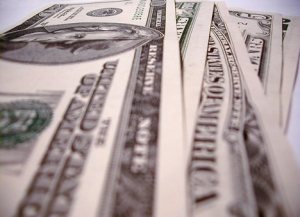Are recent performance and trends of New York State’s finances sustainable? The following post will argue that New York’s finances are in a non-sustainable path, facing major projected budget deficits that require fiscal reform.
To answer this question, we’ll go through a critical assessment of the State’s revenues, expenditures, deficits, and debt based on annual survey data by the US Census Bureau from 2005 to 2009. Furthermore, New York State figures will be compared with those of other states and, as suggested by Mikesell (2010), we will review the influence of budgeting structures, institutions, and practices.
Download the complete essay by clicking here.
NY State revenue sources, structure and administration
New York State’s total revenue can be structured in three categories: general revenue, utility revenue, and insurance trust revenue. Depending on the year, the general category[1] represents between 73% and 80% of total revenue, utility[2] between 4% and 9%, and insurance trust[3] between 0% and 23%.
(…)
In short, the state’s revenues are in a delicate situation. Moreover, as the economy recovers (…), structural challenges can remain unless bold fiscal reform is implemented in three areas with respect to revenue planning and execution: the worsening situation of tax gaps, the need to increase revenue faster than expenditure (this issue is further developed in section five), and better risk management in the insurance trust system.
Tax revenue is the category with highest standard deviation in New York State’s finances. Moreover, economic activity elasticity of tax revenue (Et) displayed in table 2 suggests that annual rates of change of tax revenue, which have been higher than those of the State’s economic activity, are decreasing fast. While in year 2006, tax revenue grew four times faster than New York’s economic activity (Et = 4.1), in year 2008 it dropped to 2.9 and in year 2009 it felt further to 0.1. If this elasticity becomes less than one, the State will have a de facto tax gap.
A widening tax gap, mixed with higher growth rates in expenditures compared to revenues will be a dangerous cocktail. Efforts are required to increase tax revenues through several avenues including reduction of tax avoidance and evasion, as well as exploring the feasibility of tax increases. The latter will naturally require the most careful implementation because it is not only politically challenging, but as the Laffer curve suggests, there is a tax rate after which tax revenue begins to decrease due to evasion and avoidance.
Table 2 – NY State tax gap estimation based on macroeconomic data
Source: US Federal Reserve, US Census Bureau, and author’s elasticity’s calculations
Finally, the issue of risk management in the insurance trust system needs to be improved. This category has the highest standard deviation (implying risk) of all revenue sources; its dramatic drop dragged total revenue; and it is a politically sensible revenue stream. The insurance trust pays for employee retirement, unemployment compensation, workers’ compensation, and disability benefit social insurance programs. This source simply can’t be placed under such a high risk!
Next: expenditure analysis; adequacy of expenditure in main functions (e.g. public welfare); deficit, debt, and the chronic budget crisis; conclusions and recommendations.
[1] General revenue category is comprised of tax, intergovernmental, current charges, and miscellaneous sub-categories.
[2] Utility revenue category comprises revenue from government owned and operated water supply, electric light and power, gas supply, and transit systems.
[3] Insurance trust revenue category is that from the government’s administered plan for social insurance
Categorías:English, Macroeconomía y Finanzas Públicas

 Could fiscal rules and performance budgeting have avoided some recent government budgeting disasters?
Could fiscal rules and performance budgeting have avoided some recent government budgeting disasters?  Towards a more stable global reserve system
Towards a more stable global reserve system  The limitations of capital market liberalization in developing countries
The limitations of capital market liberalization in developing countries
Everyone knows USA is desperately printing money at nearly zero interest rate because its no way they can afford to pay its debt. USA-UK have decided to carry on incresing debt till the collapse arrives but I am sure the richest have a war in mind in a desperate move to try to regain control. Really cobard, selfish and evil…..I hope you in South America are not severely affected by this dark forces.
Me gustaMe gusta